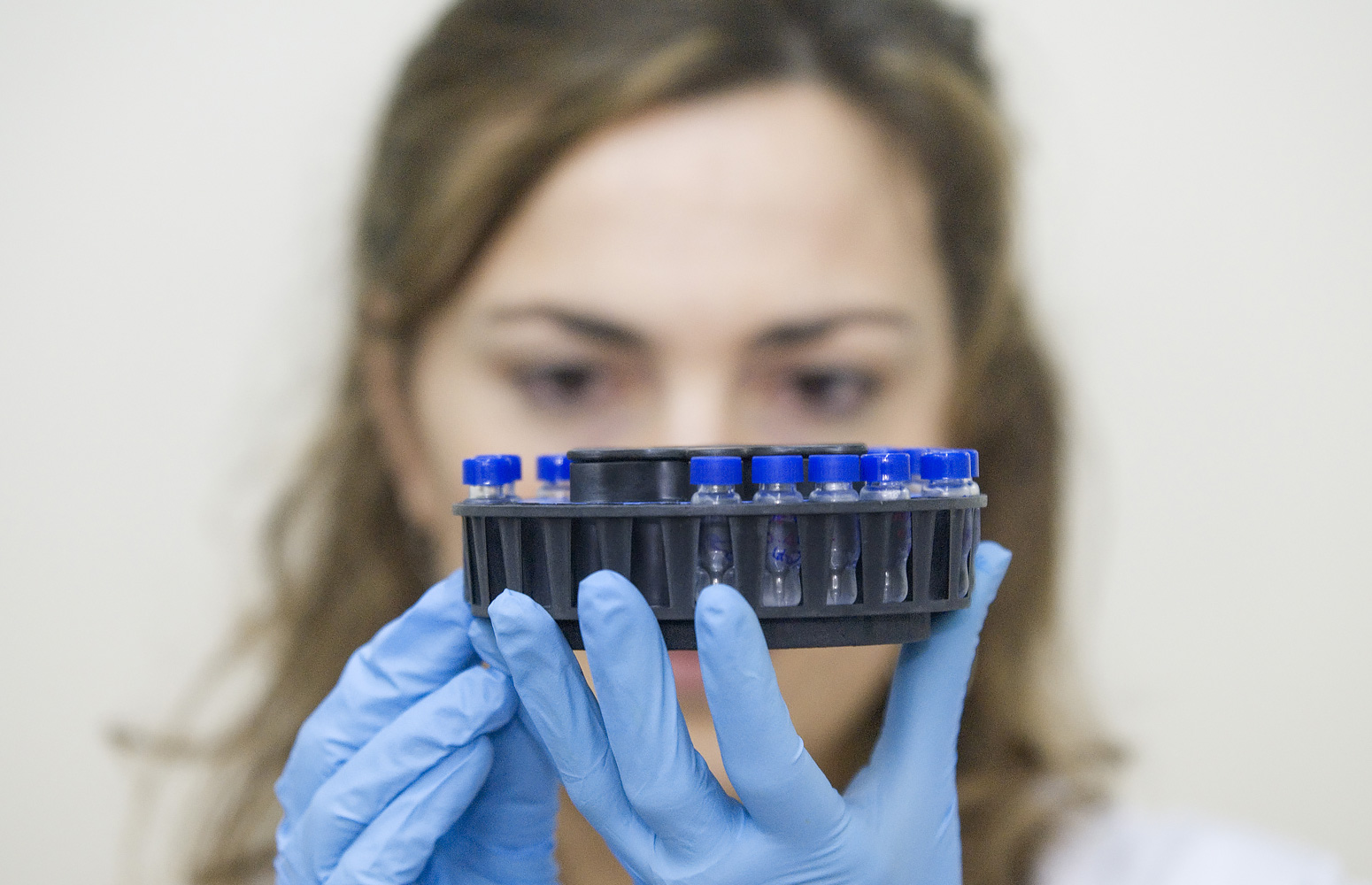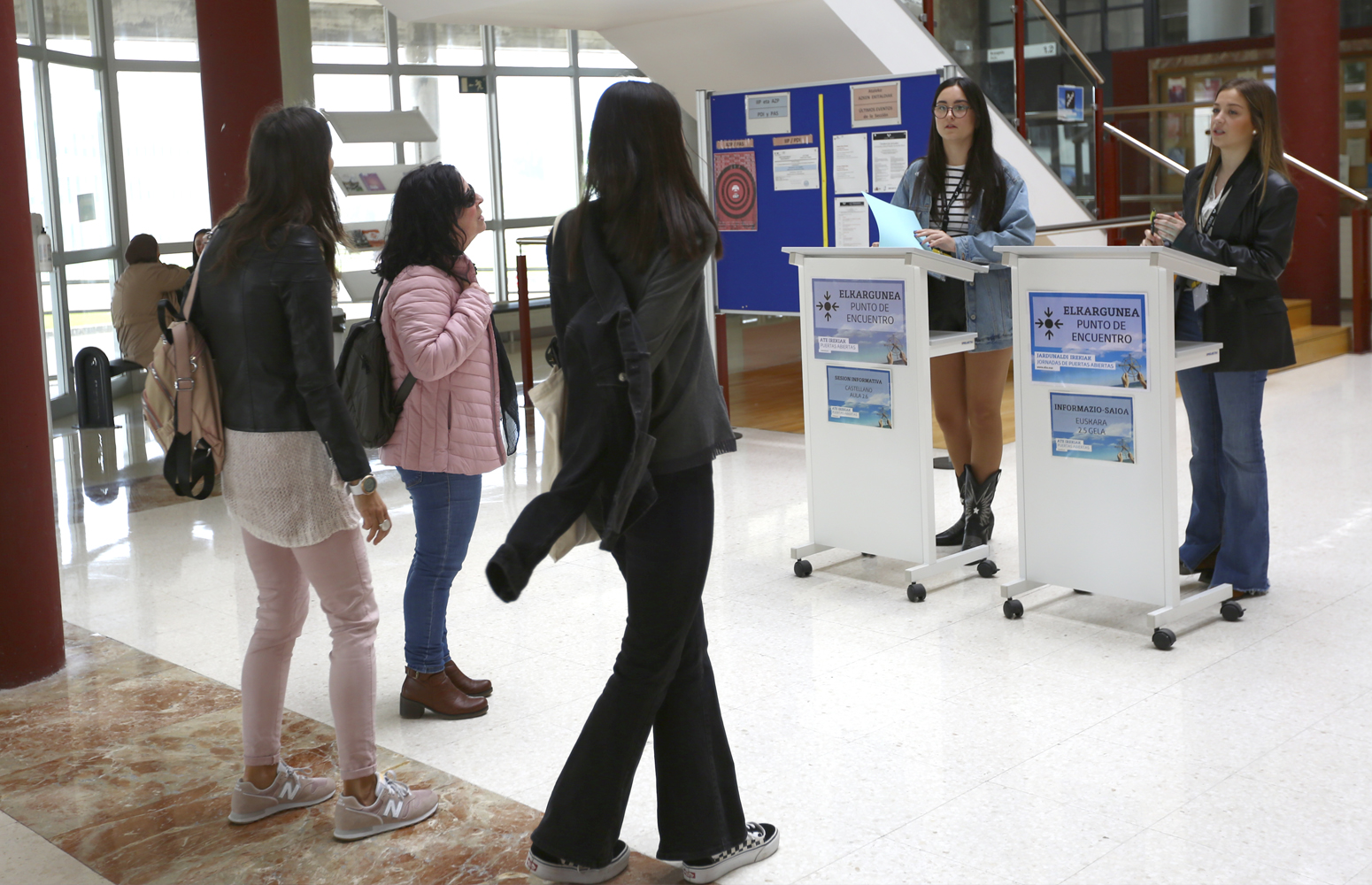El Grupo de Diseño en Electrónica Digital de la UPV/EHU ha conseguido implementar todo un sistema de inteligencia computacional en único chip para su integración en entornos inteligentes. El sistema ha sido probado en dos entornos: el entorno iDorm, dormitorio desarrollado por el Grupo de Entornos Inteligentes de la Universidad de Essex, y el entorno de un automóvil, gracias a los datos obtenidos por la Universidad Sabanci de Estambul en el coche llamado Uyanik.
-

Doce investigadoras de la UPV/EHU, entre las 500 más destacadas en el ránking del CSIC
-

1.000 estudiantes se han reunido presencialmente con empresas que buscan talento joven
-

¿Podemos elegir el tipo de padres y madres que queremos ser?
-

Ocho mujeres que cambiaron la farmacología
-

Jornadas Puertas Abiertas
Un único chip para identificar y controlar la conducción de vehículos
Un investigador de la UPV/EHU ha conseguido un sistema pequeño, autónomo y de bajo consumo capaz de controlar diversos entornos inteligentes
- Investigación
Fecha de primera publicación: 07/01/2016

Raúl Finker, investigador del Departamento de Electricidad y Electrónica de la Facultad de Ciencia y Tecnología de la UPV/EHU, recientemente doctorado, ha conseguido implementar una red neuronal artificial y sus algoritmos de aprendizaje en un circuito integrado de pequeño tamaño para su integración en entornos inteligentes. Las redes neuronales son una de las técnicas más utilizadas en la inteligencia computacional: se inspiran en los cerebros de los seres vivos, y tienen la capacidad de aprender y adaptarse a cambios en el entorno gracias al uso de distintos algoritmos de aprendizaje.
Para ello, ha utilizado dispositivos de lógica programable que permiten la implementación de todo el sistema necesario en un único chip, haciendo uso de una arquitectura hardware/software: se ha implementado la red neuronal en hardware y los algoritmos de aprendizaje en software. Así, consiguen un procesamiento de datos mucho más rápido de lo habitual, y su implantación en entornos de inteligencia ambiental —modelo de interacción en el cual las personas están rodeadas de un entorno electrónico que advierte su presencia, que es sensible al contexto y que responde de forma adaptativa y no intrusiva a las necesidades y hábitos de los usuarios— resulta ser rápida y no ocupa gran tamaño.
Un sistema completamente autónomo, capaz de adaptarse a un usuario
Para demostrar que la arquitectura hardware/software propuesta puede ser utilizada en los entornos de inteligencia ambiental para los cuales ha sido diseñado, han desarrollado dos aplicaciones en entornos inteligentes.
La primera de ellas es un entorno habitado llamado iDorm. Este entorno es un dormitorio desarrollado por el Grupo de Entornos Inteligentes de la Universidad de Essex, el cual les ha facilitado los datos con los que han realizado el estudio. Los investigadores han concluido que usando el sistema desarrollado es posible entrenar la red neuronal para que se adapte a las necesidades del usuario del entorno y sea capaz de controlar las respuestas basándose en dichas necesidades.
"Vimos que el sistema era capaz de adaptarse perfectamente al comportamiento de un usuario, para controlar los distintos elementos que había en ese dormitorio, y que se adaptaba a los cambios que el comportamiento de dicho usuario podía tener en diferentes estaciones del año", explica Finker.
La segunda aplicación es el desarrollo de un identificador de conductores en tiempo real para inteligencia ambiental aplicada al entorno de un automóvil. Para la realización de esta aplicación, los datos usados han sido suministrados por el Drive-Safe Consortium, más en concreto los datos obtenidos por la Universidad Sabanci de Estambul usando un coche tipo sedán llamado Uyanik. Usando los datos que provee el propio coche, se ha diseñado un sistema capaz de identificar al conductor basándose en su forma de conducir.
La gran diferencia con otros sistemas de identificación es que éste no requiere del uso de otros elementos ajenos al coche como pueden ser cámaras o lectores de huellas dactilares, entre otros. "Usando los datos de los acelerómetros del coche o mediante el uso de las presiones que se ejercen en los pedales del acelerador o del freno, es posible identificar los conductores obteniendo muy buenos resultados", concluye el investigador.
Esta segunda aplicación abre nuevas vías para proyectos futuros, "en los que estamos trabajando ahora", añade el investigador. Por una parte, puede servir como sistema de seguridad para el conductor, ya que "podría llegar a detectar que el conductor por alguna razón no está conduciendo como habitualmente lo hace", y, por otra, como sistema de seguridad del coche, ya que "podría detectar que la persona que va conduciendo no es una de las que habitualmente utiliza ese vehículo", explica. Esas son dos de los potenciales usos que puede tener el sistema conseguido, pero se "podría implementar en multitud de aplicaciones, en función de las necesidades y del tamaño de la red que hiciera falta", apunta Finker.
Información complementaria
Raúl Finker (Barakaldo, 1982) ha estudiado Ingeniería Técnica Industrial (Electrónica Industrial) e Ingeniería en Telecomunicación en la Universidad de Deusto, y ha hecho un máster en Investigación en Sistemas Electrónicos Avanzados en la UPV/EHU. Ha finalizado en septiembre de 2015 su tesis doctoral titulada Efficient electronic implementations of adaptive systems for ambient intelligence environments, en el Departamento de Electricidad y Electrónica de la Facultad de Ciencia y Tecnología de la UPV/EHU, bajo la dirección de Javier Echanobe e Inés del Campo. La investigación ha sido llevada a cabo en colaboración con las universidades de Essex (Reino Unido) y de Sabanci (Estambul, Turquía).
Congresos recientes
Echanobe, J.; Finker, R.; del Campo, I., "A Divide-and-Conquer Strategy for FPGA Implementations of Large Neural Network-based Classifiers" The 2015 International Joint Conference on Neural Networks (IJCNN), Killarney, Ireland, Jul. 2015
Del Campo, I.; Echanobe, J.; Asua, E.; Finker, R.; "Controlled-Accuracy Approximation of Nonlinear Functions for Soft Computing Applications. A high performance co-proccessor for intelligent embedded systems," 2015 IEEE Symposium Series on Computational Intelligence. Cape Town, South Africa, Dec. 2015 (paper accepted)
Pie de foto: El sistema de identificación no requiere del uso de otros elementos ajenos al coche (Syda Productions / Dollar Photo Club).


